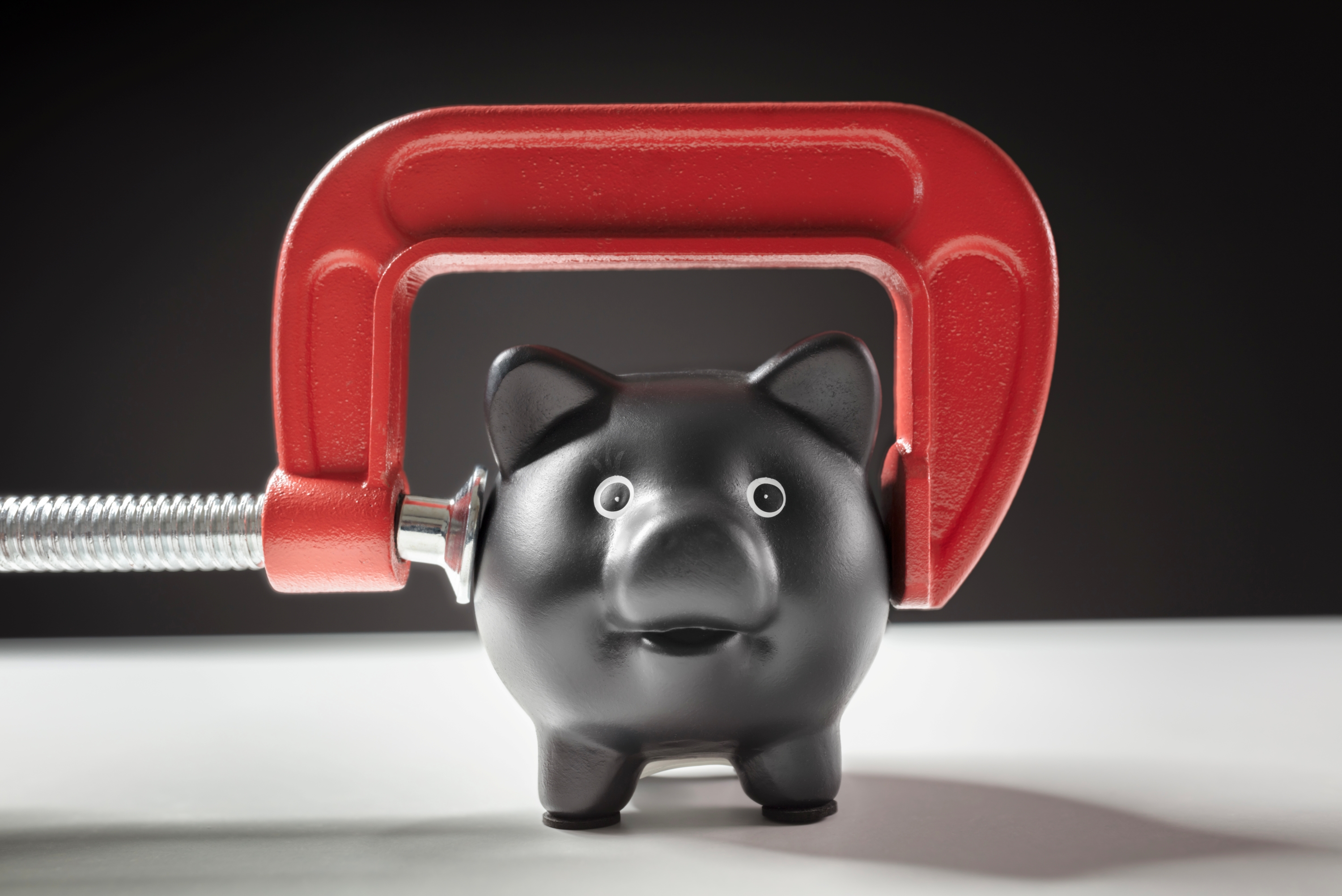6 Quick Money Moves to Make Before the Year Ends
Finish the year strong with smart money moves that can boost savings, trim taxes and set you up for a better 2026.

As the holidays approach and the year begins to wind down, it’s tempting to shift into cruise control. Between family gatherings, end-of-year deadlines and gift shopping, financial check-ins often fall to the bottom of the list. But before you officially switch into vacation mode, carving out just a little time to take care of a few smart money moves can make a big difference.
Think of this as a quick financial reset (not a full overhaul). The goal isn’t perfection; it’s progress. By reviewing where your money went this year and making some intentional decisions before December 31, you can lower your tax bill, boost your savings and walk into 2026 with a clear plan and a little more peace of mind.
Here are six practical things you can do before the end of the year to set yourself up for a stronger financial future.
From just $107.88 $24.99 for Kiplinger Personal Finance
Be a smarter, better informed investor.

Sign up for Kiplinger’s Free Newsletters
Profit and prosper with the best of expert advice on investing, taxes, retirement, personal finance and more - straight to your e-mail.
Profit and prosper with the best of expert advice - straight to your e-mail.

1. Perform a year-end budget checkup
Before setting any new goals, take a moment to assess how well your current budget has worked this year. Look through your spending over the past few months and see if there are areas where costs crept up or categories where you consistently underspent.
Are you overspending on takeout or subscription services? Is your grocery bill ballooning? Adjust your budget now so you’re not carrying bad spending habits into the new year. If you’ve had a lifestyle change like a new job, a move or a growing family, update your categories accordingly.
A quick budget tune-up now can help you redirect funds more intentionally in the new year.
2. Shore up your emergency fund
An emergency fund is your first line of defense against financial curveballs like unexpected car repairs, medical bills or temporary job loss. If you’ve dipped into yours recently or haven’t prioritized building one, now is a great time to play catch-up.
Aim to have three to six months' worth of living expenses saved in a separate, easily accessible account.
Even adding an extra $100 or $200 before year’s end can make a difference. Consider using year-end bonuses, tax refunds, or any extra cash from canceled subscriptions (more on that below) to pad your emergency savings.
A high-yield savings account is a great option for an emergency fund because it offers easy access to your money, is usually FDIC or NCUA-insured, and earns more interest than a standard savings account. This helps your safety net grow while still staying fully accessible.
Use the tool below to explore some of today's top savings account offers:
3. Use up your Flexible Spending Account (FSA)
If you have a healthcare FSA through your employer, remember: most of these accounts follow a "use it or lose it" rule. That means any funds left unspent by December 31 could vanish unless your plan includes a rollover or grace period.
Now is the time to schedule any last-minute doctor visits, dental cleanings, eye exams, or even stock up on eligible over-the-counter supplies. Use your provider’s FSA store or IRS guidance to see what’s covered.
4. Audit and cancel unused subscriptions
Subscription creep is real, and it’s one of the easiest ways to leak money each month. Between streaming services, meal kits, mobile apps and fitness memberships, you could be spending far more than you realize.
Pull up your bank or credit card statements and scan for any recurring charges. If you haven’t used a service in the last month or two, cancel it or set a reminder to reassess later. Redirecting those funds toward savings or debt payments could make a meaningful impact in 2026.

5. Schedule health appointments before your deductible resets
If you’ve already met your health insurance deductible for the year, now is the time to squeeze in any final medical, dental or vision appointments. Since your out-of-pocket costs may be significantly lower, it’s financially wise to get procedures or checkups done before the calendar flips to 2026 and your deductible resets.
This is especially important for more expensive care such as physical therapy, mental health counseling, dermatology or preventive screenings. Even routine follow-ups are worth scheduling now to lock in savings.
6. Max out tax-advantaged accounts
One of the most powerful moves you can make before December 31 is to max out contributions to tax-advantaged accounts. That includes:
- 401(k) contributions: For 2025, the limit is $23,500 for those under 50 and $30,500 for those 50 and older.
- Traditional IRA contributions: You can contribute up to $7,000 ($8,000 if you’re 50 or older) until the tax filing deadline, but contributing now gives your money more time to grow.
- Health Savings Accounts (HSAs): If you’re enrolled in a high-deductible health plan, you can contribute up to $4,300 for individuals or $8,550 for families in 2025.
These contributions can reduce your taxable income, help you grow retirement savings faster and give you a head start on next year’s goals.
Start the new year with financial momentum
A few hours of intentional planning in November and December can set the stage for a financially stronger 2026. By tightening your budget, reducing waste, maximizing benefits and investing in your future, you’re not just closing out the year. Instead, you’ll be building momentum for the one ahead.
Don't let the calendar turn without taking advantage of these smart moves. Your future self will thank you.
Related Content:
Profit and prosper with the best of Kiplinger's advice on investing, taxes, retirement, personal finance and much more. Delivered daily. Enter your email in the box and click Sign Me Up.

Choncé is a personal finance freelance writer who enjoys writing about eCommerce, savings, banking, credit cards, and insurance. Having a background in journalism, she decided to dive deep into the world of content writing in 2013 after noticing many publications transitioning to digital formats. She has more than 10 years of experience writing content and graduated from Northern Illinois University.
-
 The 'Soft' Banking Trend That Could Transform Your Savings
The 'Soft' Banking Trend That Could Transform Your SavingsThe "soft switching" banking trend allows you to explore a new bank account while keeping your primary one. See how it could benefit you.
-
 Working and Getting Social Security? An Earnings Test Guide
Working and Getting Social Security? An Earnings Test GuideIf you haven't reached your full retirement age yet, your Social Security check could take a hit, depending on how much you earn.
-
 Want to Change Banks? Try This 'Soft' Strategy
Want to Change Banks? Try This 'Soft' StrategyThe "soft switching" banking trend allows you to explore a new bank account while keeping your primary one. See how it could benefit you.
-
 I'm an Attorney and a CPA: Charitable Giving Just Got a Little Easier, But Also a Little Harder
I'm an Attorney and a CPA: Charitable Giving Just Got a Little Easier, But Also a Little HarderThe OBBB shakes up charitable deductions with a little help for non-itemizers and a new challenge for itemizers this holiday season.
-
 I'm 57 With a Great Remote Job, but My Company Wants Me in the Office Full-Time
I'm 57 With a Great Remote Job, but My Company Wants Me in the Office Full-TimeWe asked career planning and human resources experts for advice on how to handle return-to-work orders.
-
 Four Big Airport Rule Changes for Flyers
Four Big Airport Rule Changes for FlyersChanges are afoot for domestic flights — and for some international trips, too.
-
 To Tip or Not to Tip: Updated Guidelines
To Tip or Not to Tip: Updated GuidelinesIf you’re weary of widespread prompts to leave a gratuity, follow these guidelines for when it’s customary — and when you can skip it.
-
 7 Frugal Habits That Aren't Worth It (and What to Do Instead)
7 Frugal Habits That Aren't Worth It (and What to Do Instead)Avoiding waste is important, but some frugal habits are just more trouble than they're worth.
-
 How Much Should You Spend on Holiday Gifts This Season
How Much Should You Spend on Holiday Gifts This SeasonWith U.S. consumers spending near record levels on holiday items, here's how much to allocate for gift-giving, how to avoid debt and how to fit your budget into your bigger financial picture.
-
 The States Facing the Biggest Electric Bill Increases in 2025
The States Facing the Biggest Electric Bill Increases in 2025Energy prices keep rising. Discover the reasons behind the hikes, the areas most affected and how you can save on energy costs.